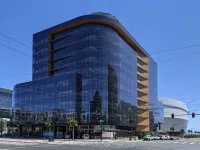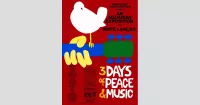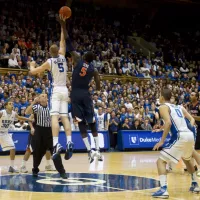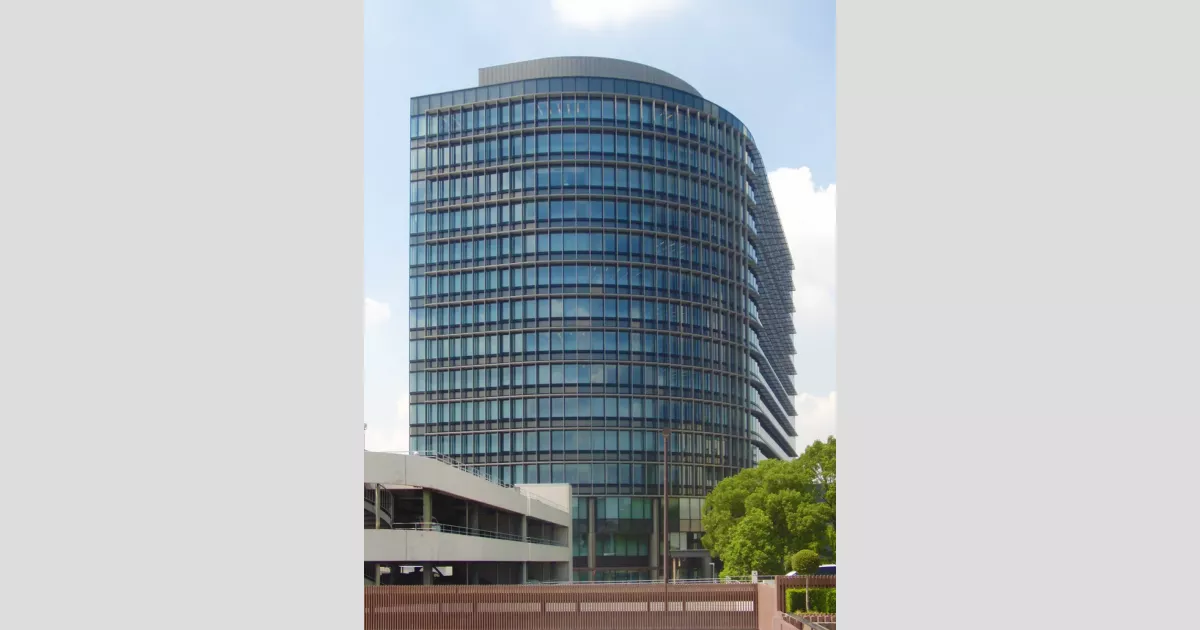Toyota Motor Corporation, a Japanese multinational automotive manufacturer headquartered in Toyota City, was founded by Kiichiro Toyoda and incorporated in 1937. It stands as the largest automobile manufacturer globally, producing approximately 10 million vehicles annually. The company is a major player in the automotive industry and is known for its production volume.
1924: Invention of the Toyoda Model G Automatic Loom
In 1924, Sakichi Toyoda invented the Toyoda Model G Automatic loom, a key development that later contributed to the Toyota Production System.
1929: Sale of Automatic Loom Patent
In 1929, the patent for the automatic loom was sold to Platt Brothers, a British company, providing the initial capital for automobile development.
September 1, 1933: Establishment of Automobile Division
On September 1, 1933, Toyoda Automatic Loom Works established an Automobile Division, under the direction of Kiichiro Toyoda.
January 29, 1934: Declaration to Manufacture Automobiles
On January 29, 1934, Toyoda Automatic Loom Works formally declared its intention to begin manufacturing automobiles.
September 25, 1934: Completion of the Prototype Toyota Type A Engine
On September 25, 1934, the prototype Toyota Type A engine was completed, marking a significant step in Toyota's automotive development.
1934: Development of the Type A Engine
In 1934, as a department of Toyota Industries, the company developed its first product, the Type A engine.
August 25, 1935: Completion of the First Truck, the G1
On August 25, 1935, Toyota completed its first truck, the G1, which debuted on November 21 in Tokyo and became the company's first production model.
April 1936: Completion of the Model AA
In April 1936, Toyoda's first passenger car, the Model AA, was completed, priced at ¥3,350.
September 1936: Public Competition to Design a New Logo
In September 1936, the company ran a public competition to design a new logo, receiving 27,000 entries.
September 19, 1936: Designation as Automotive Manufacturer
On September 19, 1936, the Japanese imperial government officially designated Toyota Automatic Loom Works as an automotive manufacturer.
1936: Entry into passenger car market and logo competition
In 1936, Toyota entered the passenger car market with its Model AA and held a competition to establish a new logo, resulting in a change of its moniker to "Toyota" from "Toyoda".
1936: Development of the Toyota AA
In 1936, as a department of Toyota Industries, the company developed its first passenger car, the Toyota AA.
August 28, 1937: Toyota Motor Corporation Incorporated
On August 28, 1937, Kiichiro Toyoda founded Toyota Motor Corporation and formally incorporated it. This marked a significant milestone in the company's history, establishing it as a distinct entity in the automotive industry.
1938: Establishment of Honsha Plant
In 1938, the Honsha plant was established near the Toyota headquarters.
1947: Emergence of the Cold War
By 1947, there was an emerging global Cold War between the Soviet Union and the U.S., who had been allies in World War II. U.S. priorities shifted.
1949: Resumption of Passenger Car Production and Economic Stabilization Program
In 1949, Japanese automakers, including Toyota, were allowed to resume passenger car production. At the same time, a new economic stabilization program to control inflation plunged the automotive industry into a serious shortage of funds, while many truck owners defaulted on their loans. The Bank of Japan bailed out the company.
1950: Financial Crisis, Korean War Order, and U.S. Trip
As the 1950s began, Toyota emerged from its financial crisis. The U.S. Army placed an order for 1,000 trucks from Toyota, helping to rapidly improve the struggling company's business performance. In 1950, company executives took a trip to the United States where they trained at the Ford Motor Company and observed the operations of dozens of U.S. manufacturers.
March 27, 1952: Death of Kiichiro Toyoda
On March 27, 1952, Kiichiro Toyoda, the founder of Toyota, passed away suddenly.
June 1953: Completion of Toyopet Crown Prototypes
In June 1953, the first prototypes of the Toyopet Crown were completed and began extensive testing.
August 1955: Sale of Toyopet Crown
In August 1955, the Toyopet Crown went on sale and was met with positive reviews from around the world.
1955: Entry into Saudi Arabia with Land Cruisers
In 1955, Toyota entered the Saudi Arabian market for the first time with Land Cruisers, following an agreement with Abdul Latif Jameel.
1956: Introduction of Land Cruisers to Yemen
In 1956, Toyota brought Land Cruisers into neighboring Yemen, expanding its presence in the Middle East.
October 31, 1957: Start of operations in North America
On October 31, 1957, Toyota's operations in North America began.
1958: Entry into the United States Market
In 1958, Toyota entered the United States market, attempting to sell the Toyopet Crown, but faced immediate challenges related to the vehicle's design and market suitability.
1959: McGraw Joins Toyota Motor Sales, USA
In 1959, James F. McGraw joined Toyota Motor Sales, USA as its first sales administrator and provided blunt feedback about the company's name and vehicle suitability for the American market.
1963: Start of operations in Europe
In 1963, Toyota's operations in Europe began.
1965: Success with the Toyota Corona
In 1965, Toyota found success in the United States with the Toyota Corona compact car, which was redesigned specifically for the American market with a more powerful engine.
1966: Increase in U.S. Sales
In 1966, the Toyota Corona helped increase U.S. sales of Toyota vehicles to more than 20,000 units (a threefold increase).
1967: Third-Best-Selling Import Brand in the United States
By 1967, Toyota had become the third-best-selling import brand in the United States, largely due to the success of the Toyota Corona.
1971: Establishment of Toyota Astra Motor in Indonesia
In 1971, Toyota established Toyota Astra Motor as a joint venture with Astra International in Indonesia, and conducted significant retooling at the PT Gaya Motor assembly plant.
1972: First Manufacturing Investment in the United States
In 1972, Toyota made its first manufacturing investment in the United States, striking a deal with Atlas Fabricators to produce truck beds in Long Beach, in an effort to avoid the 25% "chicken tax" on imported light trucks.
1973: Delta Motor Commenced Operations
In the Philippines in 1973, Delta Motor Corporation commenced operations at a new plant, beginning local production of engine blocks for the Toyota Corona 12R engine and other parts. In Indonesia, the PT Gaya Motor assembly plant began assembling various models, including the Toyota Corona, Toyota Land Cruiser, large trucks, and the Toyota Corolla, with production surpassing 10,000 vehicles.
January 1975: Completion of the First BUV Prototype
In January 1975, the first prototype of the Basic Utility Vehicle (BUV) was completed, developed in partnership with local partners to meet local needs and support technology transfers in Southeast Asia.
December 1976: Launch of the Toyota Tamaraw in the Philippines
In December 1976, the BUV was launched as the Toyota Tamaraw in the Philippines, receiving a positive reception.
June 1977: Launch of the Toyota Kijang in Indonesia
In June 1977, the BUV was launched as the Toyota Kijang in Indonesia, where it was also well received.
1981: Eiji Toyoda Steps Down as President
Also in 1981, Eiji Toyoda stepped down as president and assumed the title of chairman, marking a leadership transition within the company.
1981: Voluntary Export Restraints Agreement
In 1981, Japan agreed to voluntary export restraints, limiting the number of vehicles the nation could send to the United States each year, prompting Toyota to establish assembly plants in North America.
1982: Formation of Toyota Motor Corporation
In 1982, Toyota's sales and production organizations were merged, resulting in the formation of the Toyota Motor Corporation.
August 1983: Toyota secretly develops Lexus brand and vehicles
In August 1983, Toyota began secretly developing the Lexus brand and vehicles, investing over US$1 billion in the project.
1983: Toyota ranks third in front-wheel-drive car production
In 1983, Toyota ranked third in the production of front-wheel-drive cars, behind Nissan and Honda. Nissan's Sunny surpassed the Corolla in numbers built that year.
October 7, 1986: First Toyota assembled in America rolls off the line
On October 7, 1986, the first Toyota assembled in America, a white Corolla, rolled off the line at the NUMMI (New United Motor Manufacturing, Inc.) plant in Fremont, California.
October 1989: Introduction of worldwide logo
In October 1989, Toyota introduced a worldwide logo to commemorate the company's 50th year and to differentiate it from the newly released luxury Lexus brand.
1989: Lexus LS 400 Debuts
In 1989, the Lexus LS 400 flagship full-size sedan debuted and it was largely responsible for the successful launch of the Lexus marque.
1990: New logo appearance
In 1990, the new Toyota logo started appearing on all printed material, advertisements, dealer signage, and most vehicles.
1992: Shoichiro Toyoda becomes chairman
In 1992, Shoichiro Toyoda shifted to become chairman of Toyota.
1995: Tatsuro Toyoda becomes president
In 1995, Tatsuro Toyoda became president of Toyota, succeeding Shoichiro Toyoda.
1995: Toyota Increases Stake in Daihatsu
In 1995, Toyota increased its shareholding in Daihatsu to 33.4 percent, granting Toyota the power to veto shareholder resolutions.
December 1997: Toyota Prius first generation introduction
In December 1997, the first-generation Toyota Prius, the first mass-produced gasoline-electric hybrid car, was introduced exclusively for the Japanese market.
1997: Introduction of the Toyota Prius
In 1997, Toyota introduced the original Toyota Prius, establishing itself as a leader in the development and sales of fuel-efficient hybrid electric vehicles. This launch marked the beginning of Toyota's significant role in the hybrid vehicle market.
1998: Toyota becomes majority shareholder of Daihatsu
In 1998, Toyota increased its holding in Daihatsu to 51.2 percent, becoming the majority shareholder of the company.
September 29, 1999: Toyota decides to list on the New York and London Stock Exchanges
On September 29, 1999, Toyota decided to list itself on the New York and London Stock Exchanges.
1999: Shoichiro Toyoda steps down as chairman
In 1999, Shoichiro Toyoda stepped down as chairman of Toyota. Hiroshi Okuda also became chairman, and Fujio Cho filled the President's office.
1999: Akio Toyoda's promotion
Since 1999, Akio Toyoda had taken a seat on the board of directors.
August 2000: Exports of the Prius began
In August 2000, exports of the Toyota Prius began.
2001: Toyota acquired Hino Motors
In 2001, Toyota acquired its long time partner, truck and bus manufacturer Hino Motors.
2001: Official definition of the Toyota Way
In 2001, leaders officially identified and defined the Toyota Way.
2003: Introduction of Scion
In 2003, Scion, a youth-oriented marque for North America, was introduced by Toyota.
2004: Publication of "The Toyota Way" by Jeffrey Liker
In 2004, Dr. Jeffrey Liker published "The Toyota Way", detailing the 14 principles organized into four themes.
2004: Sponsored Football Clubs
In 2004, Toyota sponsored football clubs Fiorentina, Perugia, and Catania.
2005: Fujio Cho becomes chairman of Toyota
In 2005, Fujio Cho shifted to become chairman of Toyota and was replaced as president by Katsuaki Watanabe.
2005: Sponsored Football Clubs
In 2005, Toyota sponsored football club Valenciennes.
October 2007: Peak car manufacturing in Australia
In October 2007, Toyota manufactured 15,000 cars a month in Australia, reaching its peak.
2007: Toyota releases updated Tundra and Camry named 'Car of the Year'
In 2007, Toyota released an update of its full-sized truck, the Tundra. Motor Trend named the 2007 Toyota Camry "Car of the Year" for 2007. It also began construction of two new factories.
December 2008: Toyota forecasts first annual loss in 70 years
In December 2008, Toyota was hit by the global financial crisis and was forced to forecast its first annual loss in 70 years.
2008: Toyota Number One in Global Automobile Sales for First Quarter
In 2008, Toyota was number one in global automobile sales for the first quarter.
January 2009: Toyota announces closure of Japanese plants
In January 2009, Toyota announced the closure of all of its Japanese plants for 11 days to reduce output and stocks of unsold vehicles.
June 23, 2009: Akio Toyoda becomes company president
On June 23, 2009, Akio Toyoda, grandson of company founder Kiichiro Toyoda, became company president, replacing Katsuaki Watanabe. This marked the return of a Toyoda family member to the top leadership role since 1999.
October 2009: Toyota Establishes Office in South Korea
In October 2009, Toyota announced that they were establishing an office in South Korea and launched the Camry sedan, Camry hybrid, Prius and the RAV4.
November 2009: First vehicle recall
In November 2009, Toyota initiated the first recall to address the issue of front driver's side floor mats sliding into the foot pedal well, potentially causing the pedals to become trapped.
2009: Toyota recalls millions of vehicles due to unintended acceleration reports
Starting in 2009, Toyota conducted recalls of millions of vehicles after reports of unintended acceleration. These recalls aimed to prevent floor mats from trapping pedals and to correct potential mechanical issues with the accelerator pedal.
January 2010: Second vehicle recall
In January 2010, a second recall was started due to some crashes not being caused by floor mats but possibly by mechanical sticking of the accelerator pedal.
June 21, 2010: Chinese labor strike
On June 21, 2010, a labor strike occurred at Tianjin Toyoda Gosei Co. in Tianjin, China, with workers demanding improved wages and better treatment.
2010: Sponsored Football Clubs
In 2010, Toyota sponsored football club Fiorentina.
2011: Toyota suffers production losses due to natural disasters
In 2011, Toyota and the Japanese automotive industry were affected by the Tōhoku earthquake and tsunami, which disrupted the supply chain and caused a drop in production and exports. Severe flooding in Thailand also affected production. Toyota estimated a loss of 150,000 units due to the tsunami and 240,000 units due to the floods.
2011: Toyota continues vehicle recalls
In 2011, Toyota's recalls continued, stemming from the 2009 reports of unintended acceleration.
2012: Production of 10 Million Vehicles Per Year
In 2012, Toyota became the world's first automobile manufacturer to produce more than 10 million vehicles in a single year, marking a significant achievement in production volume. The company also reported the production of its 200 millionth vehicle that year.
2012: Sponsored Football Clubs
In 2012, Toyota sponsored football club Valenciennes.
2013: Difficulty retaining foreign employees
In 2013, Toyota CEO Akio Toyoda reported that the company had difficulties retaining foreign employees at the headquarters due to the lack of amenities in Toyota City.
February 10, 2014: Toyota to cease manufacturing in Australia
On February 10, 2014, Toyota announced it would cease manufacturing vehicles and engines in Australia by the end of 2017 due to unfavorable economic conditions. The company planned to consolidate its corporate functions in Melbourne and retain its Altona plant for other functions.
February 2014: End of production announced in Australia
In February 2014, Toyota announced the end of production in Australia.
June 30, 2014: Toyota topped global sales for first half of 2014
On June 30, 2014, Toyota narrowly topped global sales for the first half of 2014, selling 5.1 million vehicles. Volkswagen AG was close behind with 5.07 million vehicles.
August 2014: Toyota to cut spare-parts prices in China
In August 2014, Toyota announced it would be cutting its spare-parts prices in China by up to 35% in response to a probe by China's National Development and Reform Commission into high prices being charged for spare parts and after-sales servicing.
March 2015: Sponsorship of the Olympic and Paralympic Games
In March 2015, Toyota became a sponsor for the Olympic Games and Paralympic Games, starting in 2018, by supplying vehicles and communications between vehicles.
July 15, 2015: Delegation of .toyota generic top-level domain
On July 15, 2015, the company was delegated its own generic top-level domain, .toyota.
November 2015: Toyota Invests in Artificial Intelligence and Robotics Research
In November 2015, Toyota announced that it would invest US$1 billion over the next five years into artificial intelligence and robotics research.
March 2016: Toyota Partners with Yanmar to Create Fiberglass Pleasure Boat
In March 2016, Toyota partnered with Yanmar to create a fiberglass pleasure boat using Yanmar outboard marine diesel engines or Toyota inboard engines.
August 2016: Toyota Purchases Remaining Assets of Daihatsu
In August 2016, Toyota purchased all remaining assets of Daihatsu, making the manufacturer of small cars a wholly owned subsidiary of Toyota.
2016: Ford Ends Australian Production
In 2016, Ford Motor Company followed suit by ending its Australian production.
October 3, 2017: Closure of Australian plant
The closure of Toyota's Australian plant was completed on October 3, 2017, after producing a total of 3,451,155 vehicles.
2017: Toyota and General Motors End Australian Production
By the end of 2017, both Toyota and General Motors (Holden) had ended their production in Australia.
2017: Establishment of Toyota Motor North America
In 2017, Toyota Motor North America was established from the consolidation of three companies: Toyota Motor North America, Inc., Toyota Motor Sales, U.S.A., Inc., and Toyota Motor Engineering & Manufacturing North America.
August 27, 2018: Toyota invests in Uber's autonomous cars
On August 27, 2018, Toyota announced an investment of US$500 million in Uber's autonomous cars.
2018: Joint venture plant announced with Mazda
In 2018, Toyota and Mazda announced a joint venture plant that will produce vehicles in Huntsville, Alabama, starting in 2021.
2018: Start of Olympic and Paralympic Games Sponsorship
In 2018, Toyota started its sponsorship for the Olympic Games and Paralympic Games by supplying vehicles and communications between vehicles.
October 2019: Toyota backs Trump Administration's proposal on emissions standards
In October 2019, Toyota backed the Trump Administration's proposal to override California's ability to set its own emissions standards for automobiles. This damaged Toyota's reputation as a green brand.
March 30, 2020: Toyota's Uber Shares Valued at $292.46 Million
As of March 30, 2020, a corporate governance report revealed that Toyota owned 10.25 million shares of Uber, valued at $292.46 million, roughly 0.6% of Uber's outstanding shares.
April 2, 2020: BYD and Toyota Announce Joint Venture for Battery Electric Vehicles
On April 2, 2020, BYD and Toyota announced a new joint venture between the two companies called BYD Toyota EV Technology Co., Ltd., with the aim of "developing BEVs (Battery Electric Vehicles) that appeal to customers."
December 2020: Toyota's Global Ranking
As of December 2020, Toyota was the ninth-largest company in the world by revenue, highlighting its significant global presence and economic impact.
2020: Toyota Reclaims Position as Largest Automaker
By 2020, Toyota reclaimed its position as the largest automaker in the world, surpassing Volkswagen, despite an 11.3% drop in sales due to the COVID-19 pandemic. This includes subsidiaries Daihatsu and Hino Motors.
2020: Toyota top donor to election objectors
In 2020, a report by Axios found that Toyota was the top donor to 2020 election objectors by a substantial margin.
March 2021: Toyota, Hino, and Isuzu Announce Strategic Partnership
In March 2021, Toyota, its subsidiary Hino, and Isuzu announced the creation of a strategic partnership. Toyota acquired a 4.6% stake in Isuzu, and they would form a joint venture called Commercial Japan Partnership Technologies Corporation to develop fuel cell and electric light trucks.
April 2021: Toyota to buy Lyft's self-driving technology unit
In April 2021, Toyota announced that it would buy Lyft's self-driving technology unit for $550 million and merge it with its newly created Woven Planet Holdings automation division.
June 2021: Toyota Defends Donations to Republican Lawmakers
In June 2021, Toyota defended its donations to United States Republican lawmakers who voted against certifying the results of the 2020 presidential election.
July 2021: Toyota Ceases Donations to Election Objectors
In July 2021, Toyota reversed course and ceased donations to election objectors after a report showed it was the top donor to 2020 election objectors.
December 2021: Toyota announces major investment in electric vehicles
In December 2021, Toyota announced that it would invest ¥8,000,000,000,000 ($70 billion at 2021 exchange rate) in electric vehicles by 2030 and launch 30 EV models worldwide by that year, setting a sales target of 3.5 million electric vehicles in 2030.
2021: Start of joint venture plant production
In 2021, the joint venture plant between Toyota and Mazda in Huntsville, Alabama, began producing vehicles.
April 2023: Daihatsu crash test rigging revealed
In April 2023, it was revealed that Toyota subsidiary Daihatsu had cheated by rigging some models to perform better in crash tests than actual production cars. The vehicles in question had a notch in the interior panel of the front door.
September 2023: Total Production Reaches 300 Million Vehicles
By September 2023, Toyota's total vehicle production reached 300 million vehicles, demonstrating its long-term growth and global manufacturing capabilities.
December 2023: Daihatsu halts shipments due to safety misconduct
In December 2023, Daihatsu halted shipments of 64 models, including two dozens branded as Toyota, after safety investigations uncovered misconduct far greater in scope than previously expected. Affected markets included Japan as well as Bolivia, Cambodia, Chile, Ecuador, Indonesia, Malaysia, Mexico, Peru, Thailand, Uruguay, and Vietnam.
January 2024: Public apology for flawed testing
On 29 January 2024, Koji Sato publicly apologized to customers, dealers and suppliers for the flawed testing at Toyota.
January 2024: Takata airbag inflator recall update
As of January 2024, over 100 million Takata air bag inflators worldwide have been recalled by more than 20 carmakers, impacting millions of vehicles produced between 2000 and 2014.
May 2024: Decision not to extend Olympic Games sponsorship
In May 2024, Toyota announced that it will not be extending the contract after the 2024 games in Paris, due the company reportedly being unhappy with how the IOC has used its sponsorship money.
2024: Toyota's Vehicle Production Under Four Brands
As of 2024, Toyota Motor Corporation produces vehicles under four brands: Daihatsu, Hino, Lexus, and the namesake Toyota.
Mentioned in this timeline

Uber Technologies Inc is a multinational transportation company headquartered in...
California is a U S state on the Pacific Coast...
Saudi Arabia officially the Kingdom of Saudi Arabia KSA is...
Lyft Inc is a US-based transportation company providing a range...

The Woodstock Music and Art Fair held on Max Yasgur's...
Germany officially the Federal Republic of Germany is a Western...
Trending
2 months ago Lazio vs Torino: Official Lineups, Sarri's Pedro Card, Baroni's Vlasic, Ilic Returns

7 days ago Kentucky Wildcats face criticism after significant loss to Gonzaga in college basketball game.
7 months ago Galatasaray vs Kayserispor: Match Details, Championship Hopes, and Okan Buruk's Strategy
James Milner is an English professional footballer known for his versatility playing as a midfielder for Brighton Hove Albion He...

4 months ago Selena Gomez: Bathrobe Pose, Rare Beauty Fragrance Launch, and Stunning Halter Dress

2 months ago Mariners secure ALCS spot after epic Game 5; Polanco in historic matchups.
Popular

Candace Owens is an American conservative political commentator and author...

Ilhan Omar is an American politician currently serving as the...

XXXTentacion born Jahseh Dwayne Ricardo Onfroy was a controversial yet...

Tom Cotton is an American politician and Army veteran currently...
The Kennedy Center Honors are annual awards recognizing individuals and...
Matt and Ross Duffer known as the Duffer Brothers are...

